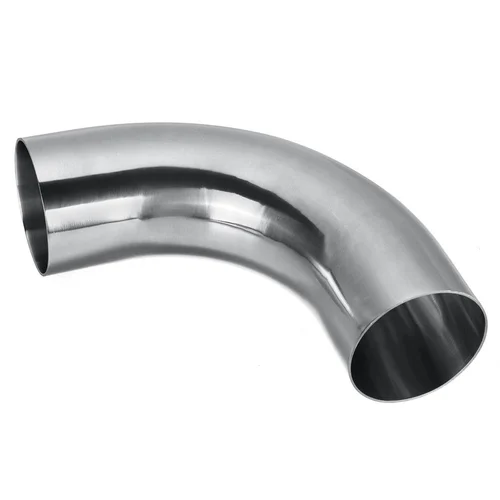-
Cangzhou Yulong Steel Co., Ltd.
-
Phone:
+86 13303177267 -
Email:
admin@ylsteelfittings.com
- English
- Arabic
- Italian
- Spanish
- Portuguese
- German
- kazakh
- Persian
- Greek
- French
- Russian
- Polish
- Thai
- Indonesian
- Vietnamese
- Zulu
- Korean
- Uzbek
- Hindi
- Serbian
- Malay
- Ukrainian
- Gujarati
- Haitian Creole
- hausa
- hawaiian
- Hebrew
- Miao
- Hungarian
- Icelandic
- igbo
- irish
- Japanese
- Javanese
- Kannada
- Khmer
- Rwandese
- Afrikaans
- Albanian
- Amharic
- Armenian
- Azerbaijani
- Basque
- Belarusian
- Bengali
- Bosnian
- Bulgarian
- Catalan
- Cebuano
- China
- China (Taiwan)
- Corsican
- Croatian
- Czech
- Danish
- Esperanto
- Estonian
- Finnish
- Frisian
- Galician
- Georgian
- Kurdish
- Kyrgyz
- Lao
- Latin
- Latvian
- Lithuanian
- Luxembourgish
- Macedonian
- Malgashi
- Malayalam
- Maltese
- Maori
- Marathi
- Mongolian
- Myanmar
- Nepali
- Norwegian
- Norwegian
- Occitan
- Pashto
- Dutch
- Punjabi
- Romanian
- Samoan
- Scottish Gaelic
- Sesotho
- Shona
- Sindhi
- Sinhala
- Slovak
- Slovenian
- Somali
- Sundanese
- Swahili
- Swedish
- Tagalog
- Tajik
- Tamil
- Tatar
- Telugu
- Turkish
- Turkmen
- Urdu
- Uighur
- Welsh
- Bantu
- Yiddish
- Yoruba

Jul . 29, 2024 23:02 Back to list
Understanding the Functionality and Applications of Roots Blower Pumps in Various Industries
Understanding Roots Blower Pumps A Key to Efficient Gas Transfer
Roots blower pumps are a type of positive displacement pump primarily used for air and gas handling applications. Named after the Roots brothers, who invented the device in the mid-1800s, these pumps play a crucial role in various industries by ensuring efficient gas transfer and vacuum creation.
How Roots Blower Pumps Work
The operational principle of a Roots blower is relatively straightforward. It employs two or three lobes that rotate in opposite directions within an enclosed housing. As the lobes turn, they create a series of expanding and contracting pockets that draw in air or gas and then expel it at a higher pressure. This process allows for consistent flow rates and relatively low noise levels when compared to other types of pumps.
Roots blowers are typically designed to handle large volumes of gas at low pressure. They are distinct from other pumps like centrifugal pumps, which are more suited for liquid handling and high-pressure applications. The key advantage of Roots blower pumps lies in their ability to move large amounts of air or gas with minimal mechanical wear and tear, making them ideal for continuous operation.
Applications in Various Industries
Roots blower pumps find extensive use in a variety of sectors. One of the most prominent applications is in wastewater treatment plants, where they help aerate water. Providing oxygen to microorganisms is essential for breaking down organic matter, and Roots blowers deliver the required air efficiently.
In the food processing industry, these pumps are critical for conveying ingredients like powders and granules. Maintaining a controlled environment is crucial, so the ability of Roots blowers to handle delicate materials safely and effectively is a significant advantage.
roots blower pump

Furthermore, Roots blower pumps are also employed in pneumatic conveying systems, which transport powders and granules across different locations without compromising their integrity. This application is vital in sectors such as pharmaceuticals, plastics, and chemicals, where the consistent movement of materials is crucial to production processes.
Advantages of Using Roots Blower Pumps
One of the standout features of Roots blower pumps is their reliability. They can operate continuously for long periods, requiring minimal maintenance compared to other types of pumps. Their simple design means that there are fewer components that could fail, leading to lower operational costs over the long term.
Additionally, Roots blower pumps are energy-efficient, especially when designed with modern technologies. Many models now come with variable speed drives that allow for precise control over air or gas flow. This adaptability means that industries can tailor the pump's performance to their specific needs while optimizing energy consumption.
Another advantage is the ability to generate a relatively steady flow without significant pressure fluctuations. This feature is particularly important in applications that require precise control over gas delivery, ensuring product quality and process stability.
Conclusion
In summary, Roots blower pumps serve as an indispensable tool across various industries for efficient gas transfer and processing. Their unique operational principles, coupled with their advantages in reliability and energy efficiency, make them a preferred choice for applications ranging from wastewater treatment to material conveying. As technology continues to advance, the evolution of Roots blower pumps will likely lead to even greater efficiencies, ensuring their vital role in industrial processes for years to come. Whether you are an engineer specifying equipment for a new system or a facility manager looking to improve operations, understanding the benefits and functionality of Roots blower pumps can lead to better decision-making and enhanced operational performance.
Latest news
-
ANSI 150P SS304 SO FLANGE
NewsFeb.14,2025
-
ASTM A333GR6 STEEL PIPE
NewsJan.20,2025
-
ANSI B16.5 WELDING NECK FLANGE
NewsJan.15,2026
-
ANSI B16.5 SLIP-ON FLANGE
NewsApr.19,2024
-
SABS 1123 FLANGE
NewsJan.15,2025
-
DIN86044 PLATE FLANGE
NewsApr.19,2024
-
DIN2527 BLIND FLANGE
NewsApr.12,2024
-
JIS B2311 Butt-Welding Fittings LR/SR 45°/90° /180°Seamless/Weld
NewsApr.23,2024











